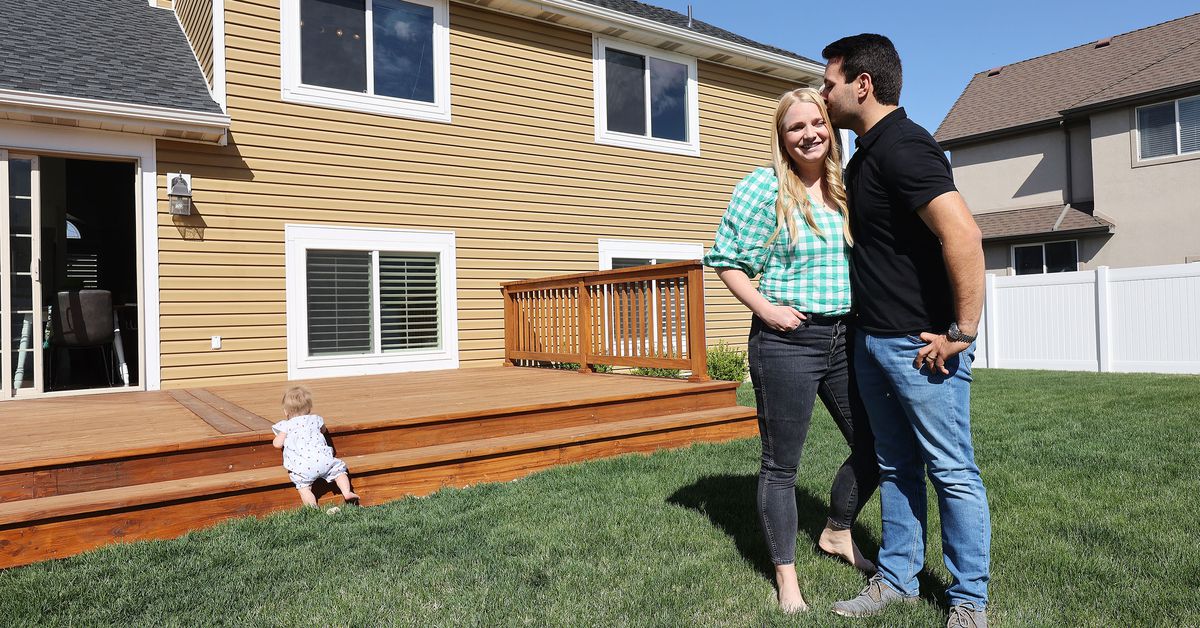Ten times, Matthew and Bethany Clewett found a house they could envision themselves making their home, where they would raise their now almost 1-year-old daughter, Nellie.
Even though their “bulldog” of a real estate agent was persistent and aggressive, each time they lost, and it became increasingly heart-wrenching.
And they weren’t picky.
Matthew Clewett — who himself is a housing wonk as the public policy director for the Salt Lake Board of Realtors — said their real estate agent told them one house they lost out on went for $60,000 to $70,000 over asking price.
But the Beehive State in particular — a state that, even before the pandemic, not only ranks high in population growth, economic health and low unemployment rates, but is also seen as an attractive place to live due to its outdoor recreation opportunities, proximity to world class skiing and hiking, and a thriving tech sector at Silicon Slopes — ranks high in numerous lists analyzing the U.S.
Utah, with its Salt Lake metro area, is a contender for having one of the hottest housing markets in the West.
To Robison, Utah’s long track record of strong population growth and economic health, even before the pandemic, puts the Beehive State at the top of the list in the western U.S.
To arrive at that ranking, Bankrate.com’s analysis used six metrics from the fourth quarter of 2020 — annual home price appreciation reported by the Federal Housing Finance Agency’s Home Price Index; share of mortgages past due as reported by the Mortgage Bankers Association; unemployment and job growth from the U.S.
Utah also had the second-strongest job growth in the nation from December 2019 to December 2020, according to a Bankrate analysis of Labor Department data.
Births were the biggest growth driver in Utah, while a majority of the growth seen in its northern neighbor of Idaho, about 60%, was driven by people moving into the state between 2010 to 2019, according to the Census Bureau’s American Community Survey.
Net migration accounted for 35% of Utah’s growth, totaling 177,242 people between 2010 and 2020, Mallory Bateman, a senior research analyst and state data center coordinator at the University of Utah’s Kem C.
The story of the West’s housing market is one of growth — while other areas of the nation begin to stagnate or “drain,” as James Wood, the Ivory-Boyer senior fellow at the University of Utah’s Kem C.
Though out-of-state movers don’t statistically make up the biggest chunk of growth in Utah, it’s still happening.
He noted the website UtahRealEstate.com had about 500,000 people based in California browsing the site last year.
Affordability is one of the big factors that’s fed Idaho’s housing market and why it’s such a close contender to Utah.
To Coman, the biggest draw is the great outdoors, its climate, and plenty of land.
But the housing frenzy has resulted in all kinds of new pressures, from the homebuilder to the buyer.
It was a cute, updated three bedroom, 2 3⁄4 bath, nearly 2,300-square-foot home in a charming Kaysville cul-de-sac.
Originally, the Clewetts wanted to find a home priced in the high $300,000 range.
When they submitted their offer, Bethany Clewett said she was “more optimistic,” while her husband didn’t want to get his hopes up.
You’re going to find a house that you think is perfect for you, and you’re not going to get it, unfortunately.
However, he said winning offers are now pretty much always over asking price, and buyers are having to get increasingly “more aggressive and more creative” as far as waiving contingencies.
More people will be priced out, now realizing they’re unable to afford the same type of home that might have been in their price range just three to five years ago.
She said building permits rose 9% compared to a year earlier, so the Salt Lake Valley continues to be an area with “great opportunities for homebuilders.” She noted that over the past 20 years, the Salt Lake City metro area issued an average of 4,800 single-family home permits in a 12-month time frame, but that’s since increased.
“Today, we don’t have a bubble because we have a lack of housing, and in order to have a bubble we would have to have oversupply.
Ulrich said the “only thing” that may slow it down a little bit is if interest rates rise — which Evangelou predicted will happen by the end of 2021, but not by a lot.
